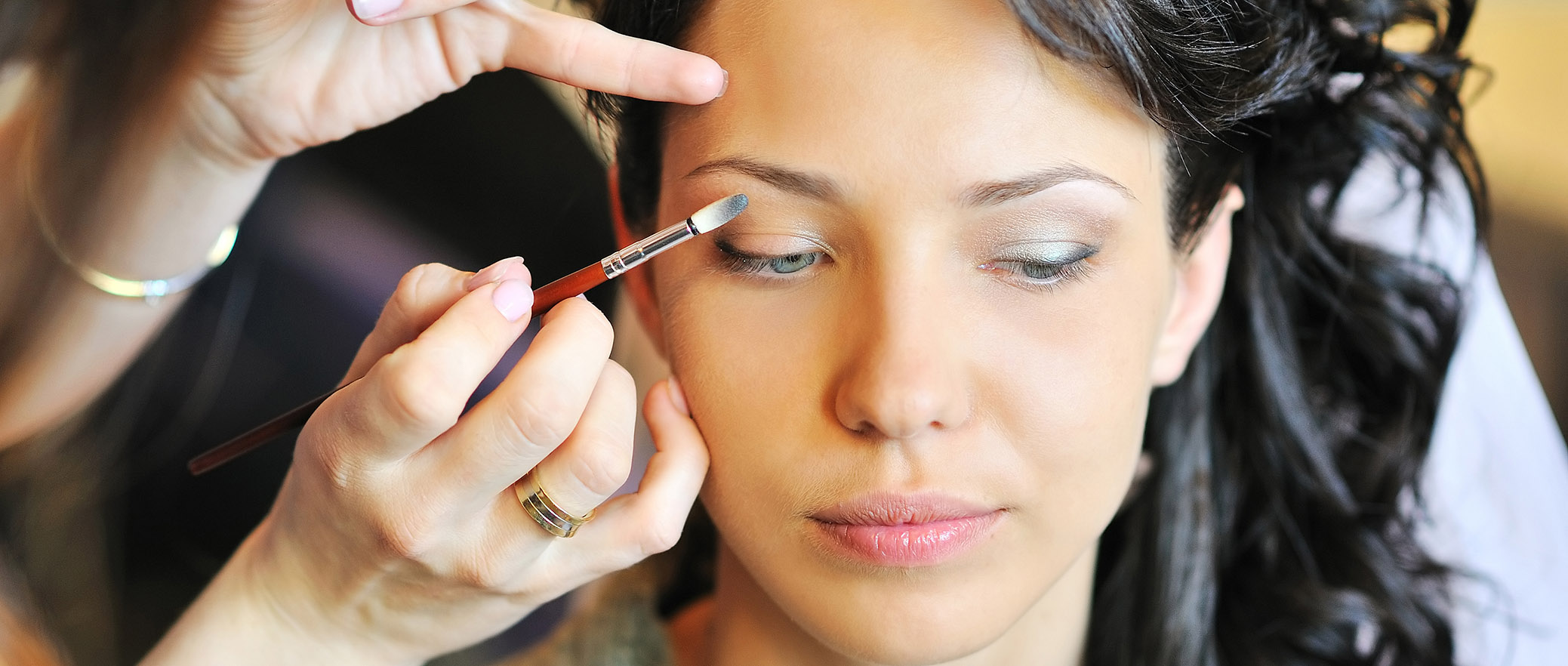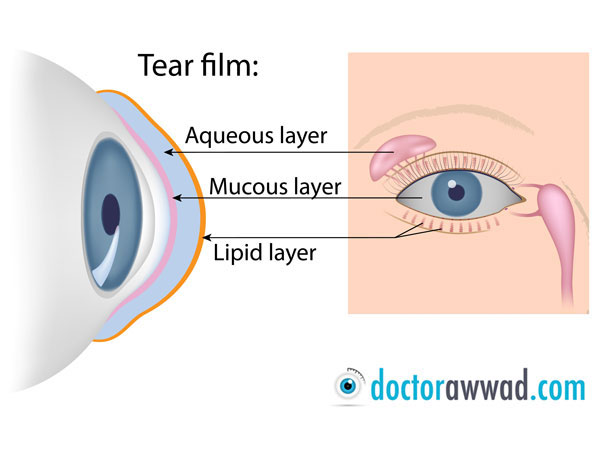What is Blepharitis?
Blepharitis is an inflammation that affects the eyelids, mostly around the area where eyelashes grow. The most common cause is a malfunction of the oil glands located near the eyelashes base. The glands become inflamed and induce eyelid margin redness, burning and itching, dry eyes and eye redness.
There are two types of blepharitis. Anterior (affecting the front part of the eyelids), and posterior, involving the back part of the eyelids. Anterior blepharitis is commonly caused by bacteria (Staphylococcus) and scalp dandruff. Posterior blepharitis affects the inner eyelid and is caused by problems with the oil (meibomian) glands. Two skin disorders can cause this form of blepharitis: acne rosacea, which leads to red and inflamed skin, with tiny skin vessels often apparent, and scalp dandruff (seborrheic dermatitis). The oil produced by the meibmian glands of the eyelid covers the tear film in the eyes and prevents its fast evaporation. When this oil is trapped inside the meibomian glands in posterior blepharitis, often due to thickening and poor quality, it leads to stasis, and is later acted upon by the resident bacteria in the eyes. The byproducts of this reaction lead to burning, tearing, and light sensitivity. Additionally, the degradation of the oil leads to fast tear evaporation, and hence, dry eye disease, with its constellation of symptoms, including burning, foreign body sensation, and eye redness.
[view photos: roascea face, tear film with lipid film on top, red eyelid margins]
Lid hygiene
In both forms of blepharitis, especially anterior blepharitis, keeping the lids clean and free of crusts is essential. Warm to hot compresses should be applied on the lids to loosen the crusts once to twice a day. This should be followed by a light scrubbing of the eyelids around the eyelashes area with a gauze, cotton swab, or one's fingers and a mixture of warm water and baby shampoo. Alternatively, there are various types of scrubbing swabs available over the counter in pharmacies, and they can be used twice daily followed by warm water wash out. Most patients must maintain an eyelid hygiene routine for life. If the blepharitis is severe, your doctor may also prescribe antibiotics and steroid eyedrops. Patients with posterior blepharitis will need to massage their eyelids to squeeze the accumulated oil in the eyelids meibomian glands. Warm to mildly hot compresses can be used before the massage. Alternatively, washing the eyes and face with warm to mildly hot water over the sink twice a day followed by eyelid massage will help first soften the oil in the glands, then squeeze it out. Patients who have concomitant acne rosacea should have that condition treated simultaneously by a dermatologist.
Topical Antibiotics
Antibiotics ointments help in controlling the bacterial load acting on the oily secretions and causing the symptoms of itching, light sensitivity, redness, among others.
Eye lubricants
As blepharitis causes dry eye disease, part of the treatment of blepharitis focuses on treating its sequelae. Eye lubricants are designed either with preservatives or without. The ones with preservatives need to be instilled up to 4 times a day, while the ones with no preservatives can be used as much as one desires, depending on the extent of the symptoms. The ones with preservatives usually come in standard eye drops containers (usually 10 or 15 ml). The ones with no preservatives are usually packaged in small disposable units to be used once or a couple of times during the same day before being tossed away. Some preservative free drops formulations also come in special containers with a filter or one-way valve to prevent bacteria to seep in.
Oral medications
Doxycylines and company
Doxycycine is originally an antibiotic; but it was found to halt the degradation of the oily secretion of the eyelids, decrease the eye inflammation, and curb the resident bacteria in the eye working on the eyelids oily secretions, all at the same time. It is prescribed in moderate to severe blepharitis, and is usually given for several months as an initialy treatment, but may be re-instituted on short occasional periods later on in the therapy to curb exacerbations of blepharitis.
Newer Generation Steroids Eye Drops
In moderate to severe blepharitis, newer generation steroid eye drops are used for a short period of time to break the vicious cycle of [eyelid inflammation-injury-inflammation-dryness-eyelid inflammation] which is seen frequently in patients with moderate to severe blepharitis. Often, they are coupled with an antibiotic to curb the bacteria working on the oily secretion. They can also be used later during the course of therapy to maintain tight control of the inflammation once exacerbations start to get out of control. Steroids eye drops are not over the counter (OTC), and can cause cataract and glaucoma if used for a certain period of time. Fortunately, newer generation steroids have very low incidence of glaucoma and cataract while still being very active at calming the eyes. They too are not OTC and should only be prescribed by your eye doctor. An example of newer generation steroids coupled with antibiotics is loteprednol/tobramycin (Zylet ®).
Nutrition & Supplements
A diet rich in omega-3 fatty acids-fish oil and flaxseed oil, is well known to markedly decrease the inflammation, and improving the quality of the oily secretions of the eyelids meibomian glands (notably regular intake of flaxseed oil), hence improving blepharitis and boosting the eye tear film. There are some pills on the market that contain the necessary dosages of both fish oil fatty acids and flaxseed oil and are specifically designed for dry eyes, although they do provide added benefit for the general health as well. An example of these drug is TheraTears Nutrition® (softgels); (http://www.theratears.com/documents/nutri_supfact.pdf). Patients can also get their own daily supplement or intake of fish oil omega-3 (EPA at least 450 mg, DHA at least 300 mg) and flaxseed oil (1000 mg).
Treatment strategies for blepharitis
Mild conditions of blepharitis can be successfully treated with routine lid hygiene (warm to hot compresses and eyelid massage) and lubrication eye drops as needed. Moderate blepharitis might necessitate the usage of oral doxycycline or vibramycin for a certain period of time, with or without the short use of steroid/antibiotic eye drops to help the eye improve fast, in addition to lid hygiene and tear drops. A diet modification to increase intake of omega-3 and flaxseed oil might be very beneficial. Severe blepharitis needs to be treated first with antibiotic ointment and steroid eye drops for several weeks, and doxycycline/vibramycine for several months. Lid hygine and lubricant eye drops, together with omega 3 and flaxseed oil intake should be used routinely. Doxycyline and steroid drops can be re-intituted for a short period, on top of the baseline treatment, when needed to control occasional exacerbations. More aggressive measures to treat dry eyes might be needed (topical cyclosporine).

